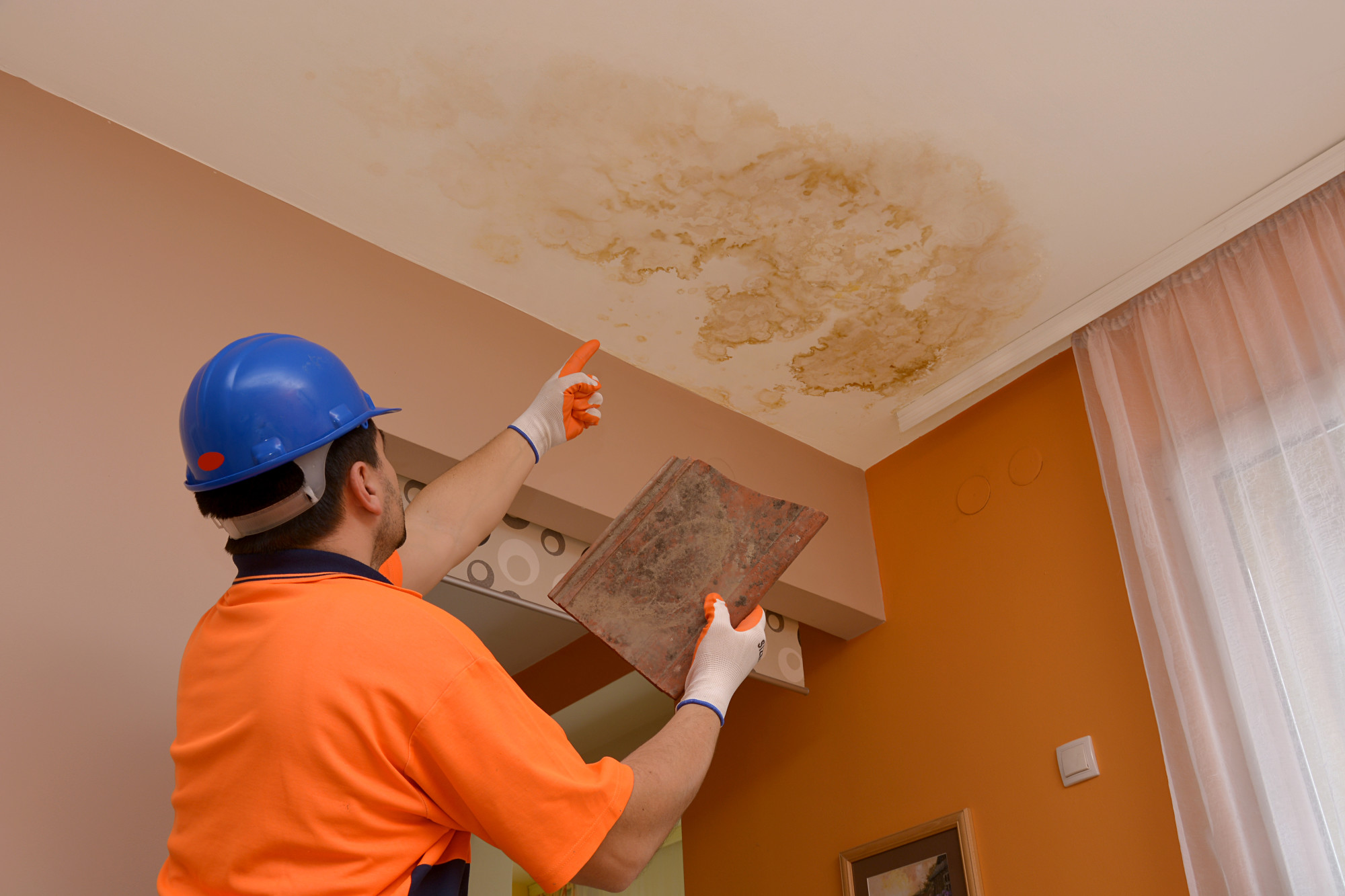Water damage is one of the leading reasons homeowners make claims on their property insurance. In 2017, the average claim for water damage in the U.S. was approximately $10,000.
Two keys to mitigating the damage water causes are prevention and early detection. So learning how to spot possible water damage is essential.

Some signs of water damage in walls are obvious. Such as seeing water ponding on the floor or it is dripping down the wall from above.
Below are some signs that are not as easily identifiable.
1. Sagging or Sogginess
Drywall that is sagging is one of the signs of water damage on ceiling and walls. As water moves down the wall it seeps into the drywall which makes it heavy. Once it becomes saturated enough, it will begin to sag.
Walls with water damage can also feel soggy or damp to the touch before more serious signs of damage occur.
2. Paint or Wallpaper Damage
When water leaks into a wall, it causes the wall to expand. When the wall expands, it can make paint and wallpaper buckle outward. Even if the leak gets fixed, the wall or wallpaper can remain warped. It can also leave behind a bubble when the wall shrinks back again.
3. Increase in Your Water Bill
An undetected or repaired water leak can cause a significant increase in the water use of your home. So if you notice your water bill is suddenly costing you more than you were paying during the same time in the previous year, it’s time to check for a water leak.
4. Discoloration
Walls and ceilings often change color when they are wet. Painted drywall, stucco, and other materials will appear darker than the original color. You also may even see a darker ring around the edges to help identify the leak.
5. Floor Damage
Signs of flood damage in house vary by floor type. Wooden flooring can buckle which you can notice by comparing it to the floor level around it. If it goes unnoticed prior to the water receding, you may only be able to tell there was water damage by seeing nails that remain pushed up by the floorboards.
Wet carpeted flooring will feel wet to the touch and may make a squishing sound when walked on. Linoleum flooring can buckle and curl up on the edges.
6. You See or Smell Mold
If walls, ceilings, wooden or carpeted flooring gets exposed to a water leak, mold can develop if the water is not removed quickly enough. This can happen either because the water leaked into an area without good ventilation or the humidity is too high.
Mold is a health hazard. It grows in a multitude of colors and it can cause your home to smell musty. Mold should get removed as soon as it gets found and can need emergency restoration services to get the job done properly.
Look for Signs of Water Damage in Walls Now
Water damage can cause heavy damage to your home if the source of water is not abated. To protect your home from extended damage, take some time now to look for signs of water damage in walls now. Remember to look at the ceiling and floors, too.
Hungry for additional tips for home maintenance and improvement? Check out our website for more great articles.








Comments 2